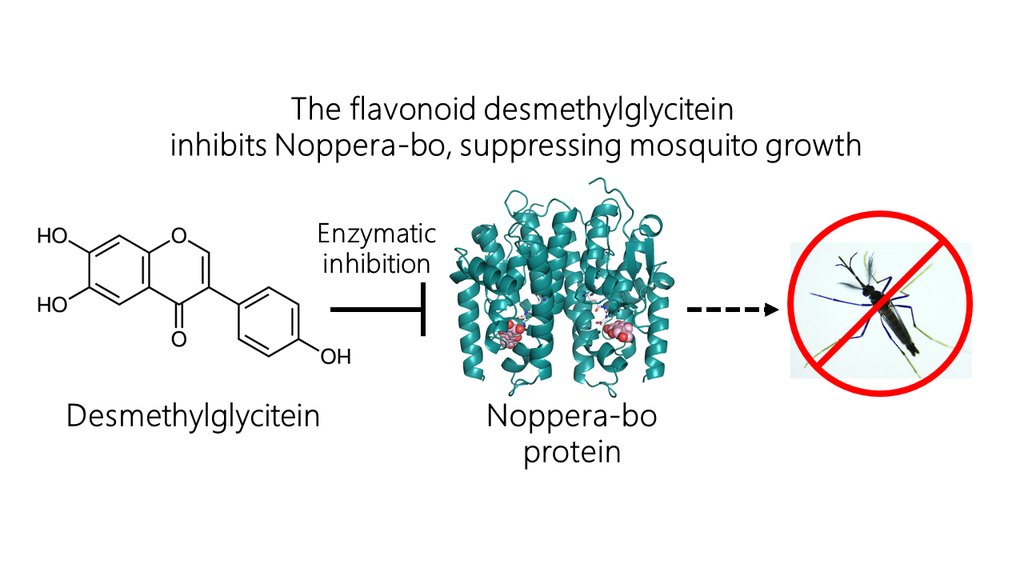・Flavonoids compound, Desmethylglycitein(DMG), which can affect many aspects of insect development and physiology, can exert larvicidal activity against Aedes aegypti.
・An X-ray crystallographic analysis and MD simulation of AeNobo revealed the molecular mechanism through which these flavonoids inhibit AeNobo enzymatic activity.
・The development potential of a novel environment-friendly IGR controls the mosquito population by inhibiting ecdysteroid biosynthesis.
Abstract
Researchers of a research consortium team reported that several flavonoids, including daidzein, inhibit the activity of glutathione S-transferase Noppera-bo (Nobo), an enzyme used for the biosynthesis of the insect steroid hormone ecdysone, in the yellow fever mosquito Aedes aegypti. The crystal structure of the Nobo protein of Ae. aegypti (AeNobo) complexed with the flavonoids and its molecular dynamics simulation revealed that Glu113 forms a hydrogen bond with the flavonoid inhibitors. Consistent with this observation, the substitution of Glu113 with Ala drastically reduced the inhibitory activity of the flavonoids against AeNobo. Among the identified flavonoid-type inhibitors, desmethylglycitein (4′,6,7-trihydroxyisoflavone) exhibited the highest inhibitory activity in vitro. Moreover, the inhibitory activities of the flavonoids correlated with the larvicidal activity, as desmethylglycitein suppressed Ae. aegypti larval development more efficiently than daidzein.
Benefit
Desmethylglycitein is the most efficient flavonoidal inhibitor of AeNobo, which acts as a growth inhibitor
Market Application
・Developing an environmentally-friendly insecticide to control Aedes aegypti
Publications
https://bmcbiol.biomedcentral.com/articles/10.1186/s12915-022-01233-2
Other
・https://pubs.rsc.org/en/content/articlelanding/2015/CC/C5CC02067K
・https://www.sciencedirect.com/science/article/pii/S0021925817482147?via%3Dihub
・https://www.jstage.jst.go.jp/article/jpestics/46/1/46_D20-072/_article

